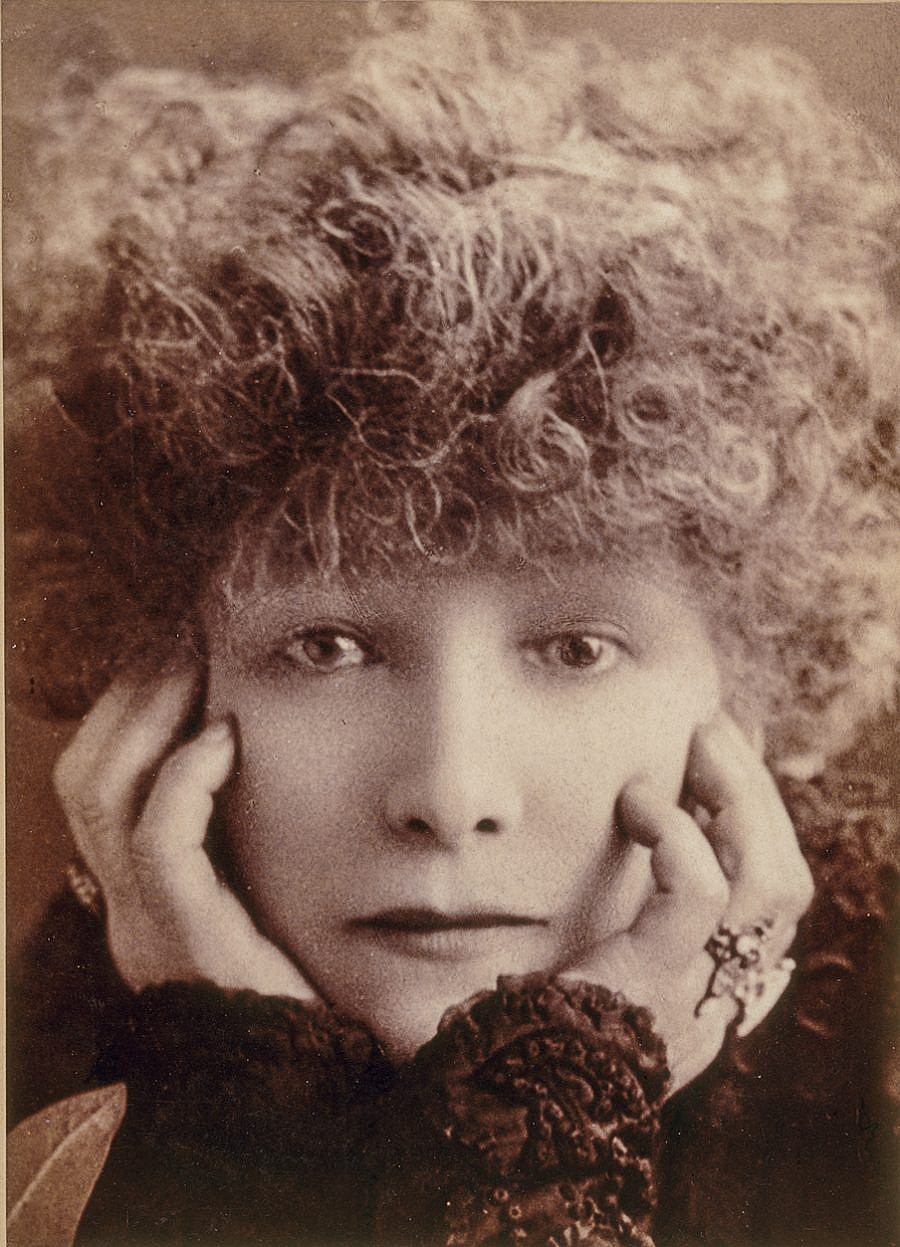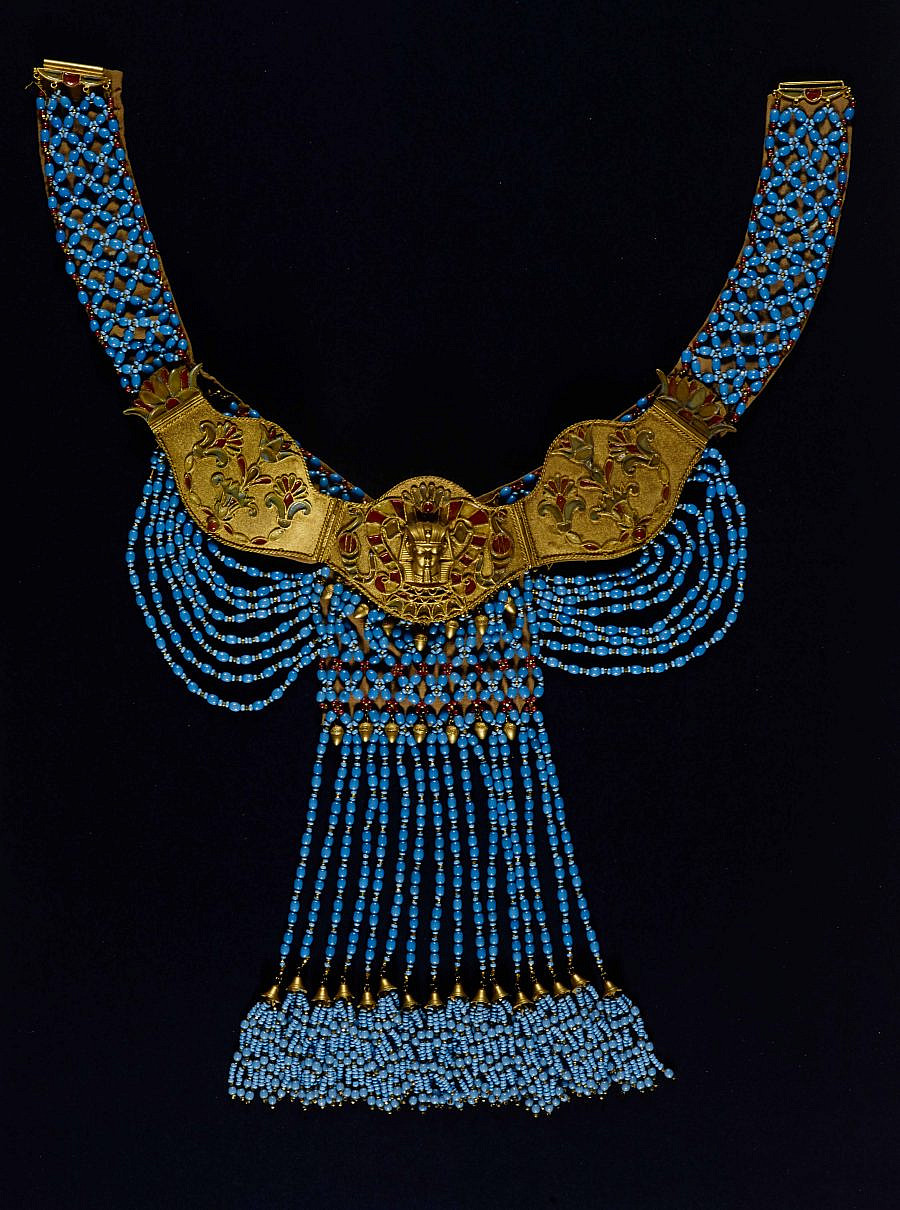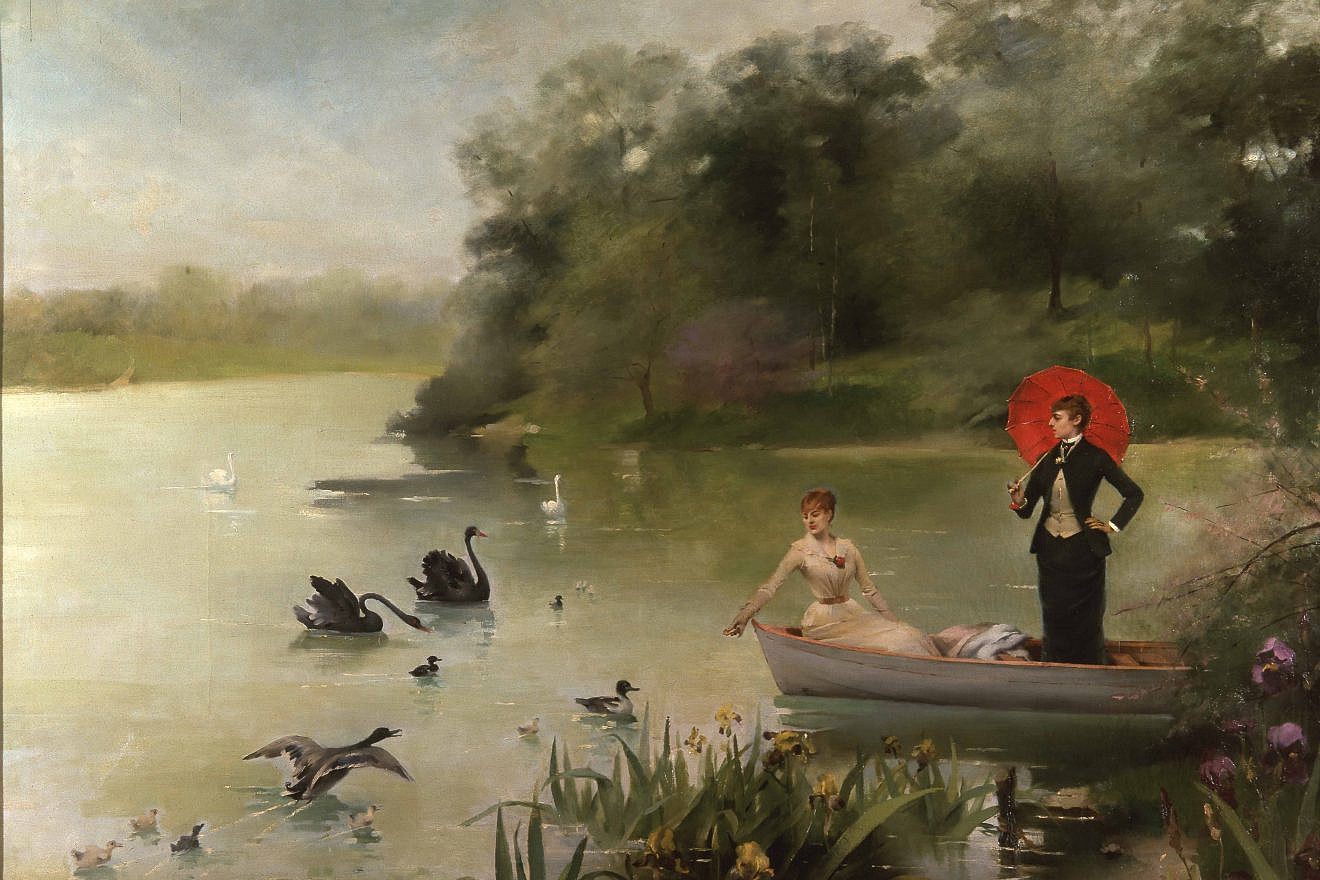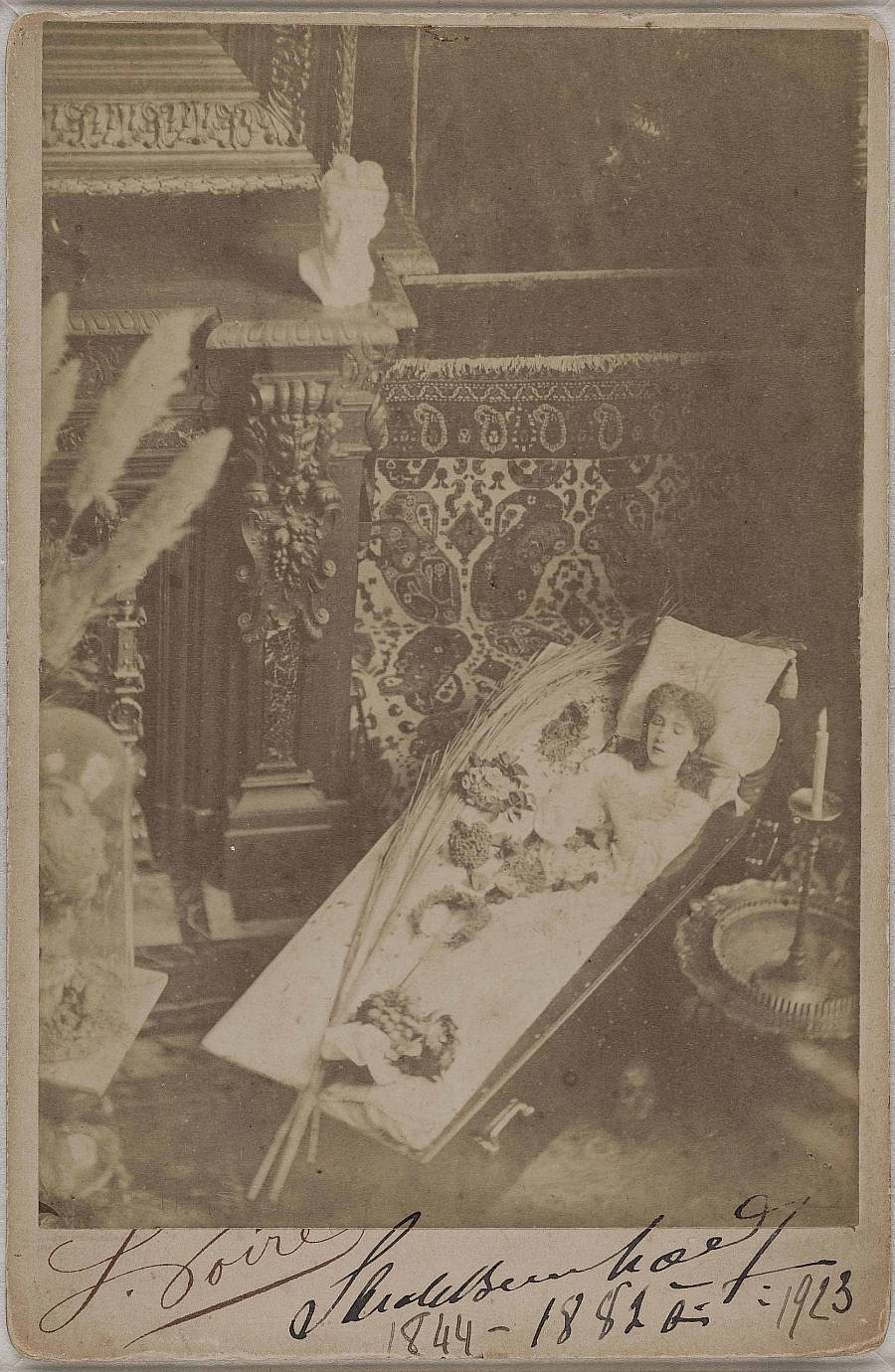Carol Ockman, art history professor emerita at Williams College, wrote her first book proposal in the 1990s, years before she knew she would co-curate an exhibit on the same topic at New York’s Jewish Museum.
“My first sentence was, ‘Sarah Bernhardt was the Madonna of her time, only better.’ Now you could probably say, ‘She’s the Lady Gaga of her time,’” Ockman told JNS. “There are other figures whom one might name, but for me, it was Marilyn Monroe.”
Henriette-Rosine “Sarah” Bernhardt, who died at 78 in 1923, was at the center of the Jewish Museum’s exhibit “Sarah Bernhardt: The Art of High Drama” (December 2005 to April 2006). In Paris, the Petit Palais is marking the centennial of Bernhardt’s death with the exhibit “Sarah Bernhardt: And the Woman Created the Star” (through Aug. 27), nearly double the size of the New York show 18 years ago.
Some of the artworks in the Paris exhibit “evoke the antisemitism she had to cope with,” which is also to be the subject of a lecture at the museum, Petit Palais spokeswoman Mathilde Beaujard told JNS.
The “Divine Sarah,” as she was known, was a complicated and fascinating figure, whom no high school yearbook editor would have chosen to succeed, let alone to come to symbolize France and to achieve stardom “immortality” after a 60-year career.
“I would suspect that she had a very big need to be seen,” Ockman said. “Her mother and her aunt were both courtesans. Her mother was Jewish. Her father was absent.”
Bernhardt wrote an autobiography that, given her personality, one would assume would be a full reveal, but the volume is the opposite, according to Ockman. One thing learned is that when Bernhardt was very young, she jumped out a fourth-story window, and seriously injured herself, to gain the attention of her mother, Judith Bernard. “I think that is significant,” Ockman said.

She gained the attention of many others in subsequent years. In 1980, Andy Warhol included Bernhardt in his “Ten Portraits of Jews of the Twentieth Century” series, which he called “Jewish geniuses,” alongside, Louis Brandeis, Martin Buber, Albert Einstein, Sigmund Freud, George Gershwin, Franz Kafka, the Marx brothers, Golda Meir and Gertrude Stein.
For Bernhardt’s 1912-13 U.S. tour, Mark Twain wrote in the program, “There are five kinds of actresses: bad actresses, fair actresses, good actresses, great actresses—and then there is Sarah Bernhardt.” And when Oscar Wilde penned the play “Salomé,” he sought Bernhardt to play the title role: Herod’s daughter, who has John the Baptist beheaded and performs the infamous dance of the seven veils.
It’s difficult to account for just what made Sarah Bernhardt Sarah Bernhardt. But one thing is clear to Ockman. Judaism is a very important part of Bernhardt’s story.
‘La belle Juive’
She had written a book chapter about an 1848 portrait of Betty de Rothschild by renowned French Neoclassical artist Jean Auguste Dominique Ingres. “It was, I think, the first time anybody put ‘Ingres’ and ‘Jew’ in the same sentence,” she said.
“The way that I came to her is odd,” Ockman told JNS of her focus on Bernhardt.
Ockman had wondered why the Jewish baroness looked so different from the artist’s other society portraits. “I determined that it was because of stereotypes of Jewesses,” she told JNS. “Otherwise that image could never have been so inviting.” No one else had noticed that Ingres had stereotyped la belle Juive, the “beautiful Jewess,” or no one wanted to comment.
“But I did,” Ockman said. “I didn’t object to it. I liked her. She was so approachable.”
The chapter generated buzz and was republished, and she started receiving a lot of queries. One, which she couldn’t resist, came from two art historians she knew and respected to contribute to the volume “The Jew in the Text: Modernity and the Construction of Identity.” She racked her brain for a 19th-century and a 20th-century Jew about whom to write and arrived at Bernhardt and comedian Sandra Bernhard.
“In a very short period of time, Sandra fell out because Sarah was the thing,” Ockman said. “I just was really smitten by her at that time.”
Studying Bernhardt over many years, Ockman found the same “beautiful Jewess” stereotypes at play that she had noticed with the Ingres painting.
“There are some images of Bernhardt in profile that capitalize on that,” she said. “Not only is she beautiful with a beautiful profile, but she’s sensual.”
Paintings and photos of Bernhardt “laden with jewels” associate her with the exotic East. “Placing her in the Orient is part of that stereotyping of the Jewess,” she said.

Bernhardt was baptized and was a practicing Catholic, but Ockman said that caricatures of her peddled antisemitic tropes.
By the time Bernhardt publicly defended Alfred Dreyfus, the Jewish French officer falsely convicted of treason, she was too big to smear in that way. “But a lot of the caricatures of her in the 1880s became the anti-Dreyfusard caricatures,” Ockman said.
“She still knew in her bones what it meant to be vilified as a Jew. Those caricatures are vile. If I think about how she got so shtark,” Yiddish for intense, “it comes from being attacked in those heinous ways,” Ockman said. “Some of those attacks were certainly represented as antisemitic.”
Her archival research led to Bernhardt’s handwritten notes to other actors, including those supporting Dreyfus. “To hold in my hands, as a Jew, those notes in defense of Dreyfus—that just felt really great to me,” Ockman said. “I can’t really say anything more than that. Because we all know our history. We all know our present.”
‘Who do you think you are, Sarah Bernhardt?’
People often come up to Ockman “conspiratorially” and tell her when they were little, their mother or another relative would yell at them when they were acting out and say: “Who do you think you are, Sarah Bernhardt?”
Many know that or other catchphrases associated with Bernhardt—like “Regular Sarah Bernhardt” or “Sarah heartburn”—even if they don’t know a lot about her.
“I’ve thought a lot about who might be famous enough to have a phrase like that, and it’s not that many people,” Ockman told JNS. “The most dominant one is, ‘Who do you think you are, the Queen of Sheba?’”
Bernhardt has an “afterlife” a century after her death and will still be talked about in another 100 years, Ockman thinks, because of her “uncanny” understanding of how to leverage mass culture as it was emerging. Bernhardt did her own publicity and marketing, and in 1880 broke a contract with the great Comédie Française—at great expense in fines—to run her own theater.
“Her skill at manipulating photography, the poster, advertising and then film when it was in the gutter as an art form—it’s truly prescient,” Ockman said. “Essentially, she created her own brand in multiple ways through her acting, her wardrobe, her repertory, and she knew how to keep it fresh through repetition and variation.”
In part through her work running an ambulatory during the Franco-Prussian War, and later, as an amputee, visiting battlefields during World War I, Bernhardt came to not only symbolize acting but to “embody France itself,” Ockman said. “She became a symbol of the French nation.”
And with overseas travel facilitated by the steamship, Bernhardt traveled to the United States and achieved a degree of visibility that was inaccessible to her predecessors.
“The main reason I think people should be interested in Bernhardt is that she anticipated the mass-media star, the Hollywood star, as we’ve come to know it,” Ockman said.
And in recent years, scholars have focused on Bernhardt—who had her own company, chose her own repertory and owned her own theater, Théâtre Sarah-Bernhardt—as a model of female entertainment executives. (During Vichy France during World War II, her name was removed from the building. A mayor is trying to reinstate it, “but it still hasn’t been restored,” Ochman said.)
Another factor that has helped solidify Bernhardt’s immortality is the myths surrounding her, including those she manufactured.

Contrary to myth, Bernhardt did not use a wooden leg, and although she was described as being promiscuous with men, the evidence shows that her primary relationship was with Louise Abbéma. In a famous photo, a bust of Abbéma looks down on Bernhardt lying in a coffin, and a painting of Bernhardt and Abbéma in a boat, which the Bibliothèque Nationale in Paris exhibited around 1990, contains an inscription marking “the amorous liaison of Bernhardt and Abbéma.” Ockman notes that some still refute that Bernhardt was a lesbian. (The Museum of Fine Arts in Boston calls Abbéma a “friend” of Bernhardt’s.)
Bernhardt claimed that she slept in a coffin when she gave her bed to her dying sister, Régine, who came to live with her. But Ockman thinks this is an example of Bernhardt’s exaggerated stunts. In her autobiography, Bernhardt claims that she rehearsed her lines in a coffin.
“Bernhardt is a great mythmaker herself,” Ockman said.

The actress was very sickly—perhaps tubercular and certainly neurasthenic—and was very skinny. She made the latter fashionable to the extent that Ockman associates her with “heroin chic.”
“I like to say that Bernhardt made her living by dying nightly, and twice a day when there was a matinee,” she said. “At around age 35, she had herself photographed in a coffin, just around the time that her dying nightly became de rigueur. And she had those printed, and she sold them.”
Bernhardt’s range was staggering—from classical theater to melodrama to music hall, boulevard theater and even vaudeville.
“And then she gets to the real gutter, which is film,” said Ockman. “She’s the first famous star to lend her name to cinema, and that was her passport to immortality.”

























